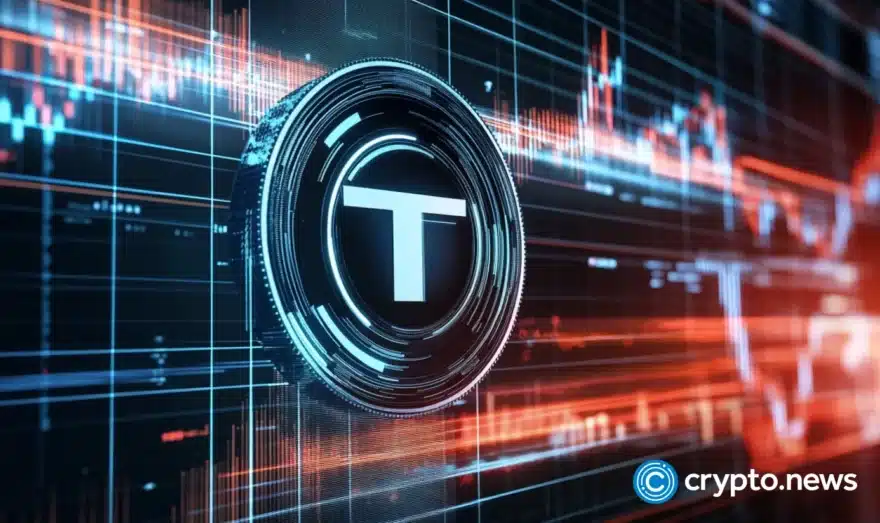Devs accuse colleagues from Bitcoin Core of being rogue over the plans to remove the spam filter from Bitcoin

The validity of most blocks is confirmed using the Bitcoin Core client. No wonder developers working on Bitcoin Core have some influence on Bitcoin per se. Lately, they have been pushing to remove limits on arbitrary data from blocks (non-monetary data, such as text messages, pictures, and more). Despite the backlash from the Bitcoin community, the Bitcoin Core developers pushed for implementation, arguing with their peers. Citrea is named as the implementation’s stakeholder.
Table of Contents
What exactly Bitcoin Core is going to change?
Bitcoin Core will remove OP_RETURN in the next version, scheduled for release in October. OP_RETURN is a script Bitcoin Core devs added to Bitcoin in 2014. It aimed to limit the arbitrary data (Bible verses, images, etc) in each block and separate it from more crucial information associated with BTC transactions so that the network would ignore this data while working with monetary data.
There can be only 83 bytes of space per block intended for arbitrary data recorded in unspendible TX outputs. It’s worth noting that Bitcoin Core developers have encouraged bitcoiners not to use the Bitcoin blockchain for recording arbitrary data, as there are better options that would not pile extra pressure on the Bitcoin network. The OP_RETRUN segment in the Bitcoin Core 0.9.0 release description reads:
“[OP_RETURN] is not an endorsement of storing data in the blockchain. The OP_RETURN change creates a provably-prunable output, to avoid data storage schemes – some of which were already deployed – that were storing arbitrary data such as images as forever-unspendable TX outputs, bloating bitcoin’s UTXO database.
Storing arbitrary data in the blockchain is still a bad idea; it is less costly and far more efficient to store non-currency data elsewhere.”
However, 11 years later, Bitcoin Core developers decided to remove the 83-byte limit, allowing users to set their own limits manually. By default, there will be no limitations at all. It may fuel the use of the Bitcoin blockchain for backing various media content, etc. It’s worth noting that even with an 83-byte limit, Bitcoin has always been used for arbitrary data transactions. The limit is thought to keep Bitcoin safe from overloading and spam.
The changes were implemented despite much criticism from the community. The way Bitcoin Core was pushing the change stirred controversy that reached people not engaged in the tech backrooms of Bitcoin.
Conflicting reasoning for the change
In a statement released on June 6, 2025, Bitcoin Core cited censorship resistance as the reason for the change. However, developer Peter Todd, who created a pull request calling for the removal of OP_RETURN, raised a different reason. He called the data recorded in unspendable TX outputs a harmful burden for developers and emphasized that removing the limit altogether is more efficient:
“As was discussed in the mailing list discussion, entities are using unspendable outputs in lieu of OP_Return outputs. Precisely because of the size limit. This increases the UTXO set size unnecessarily, a harmful effect of having the arbitrary OP_Return output limitations […]
There’s no reason why Bitcoin Core should be forced to take on the maintenance burden of maintaining arbitrary limits that we believe are ineffective, and even harmful.”
One of the problems with this case is the issue of centralization. The Knots software is one of the preferred alternatives to Bitcoin Core, but its influence on the network is way lower. As Peter Todd puts it in one of his messages, “We […] know that Knots isn’t going to be effective at preventing transactions from being mined even if it gets, say, 50% of nodes and 25% of hash power. You need Bitcoin Core on board to have any chance of success.”
At the same time, the Bitcoin Core statement reads, “While we recognize that this view isn’t held universally by all users and developers, it is our sincere belief that it is in the best interest of Bitcoin and its users, and we hope our users agree.” This portion of the statement somewhat conflicts with the second paragraph, which states, “Bitcoin Core contributors are not in a position to mandate [certain policies].”
An Ocean Mining executive using the Bitcoin Mechanic handle assumes that Citrea could back the proposal. Citrea is the company that raised $14 million to add layer 2 functionality to Bitcoin blockchain in 2024. However, Jameson Lopps of Citrea dismissed these claims.
In April, Bitcoin Mechanic posted a tweet claiming he had been banned on GitHub for criticizing the removal of OP_RETURN limits.
The community battle
An online outrage was caused by two reasons: the implementation itself and the way Bitcoin Core was pushing it despite the significant opposition.
Those opposing the change advocate for Bitcoin remaining an electronic cash system, not a blockchain to host videos, images, etc., which may turn it into a platform similar to many other multi-purpose blockchains at the expense of the resources needed for monetary transactions.
Moreover, the way Bitcoin Core developers insisted on their vision, ignored or hid the messages of opposition on various platforms, or attempted to move the discussion away from public spaces, contributed to the controversy surrounding the debate that made waves across the cryptocurrency community.
However, Bitcoin Core devs insist that they are right. They say that those who feel a distaste for Bitcoin Core 0.30 may just fork. They don’t pretend to believe this may be efficient.
Many years ago, Bitcoin ABC and Bitcoin SV were fighting over the block size and the name of the true Bitcoin. At the end of the day, both currencies lost to the original Bitcoin. Will Bitcoin Core’s implementation turn Bitcoin into something different? Will learn by the end of the year.















